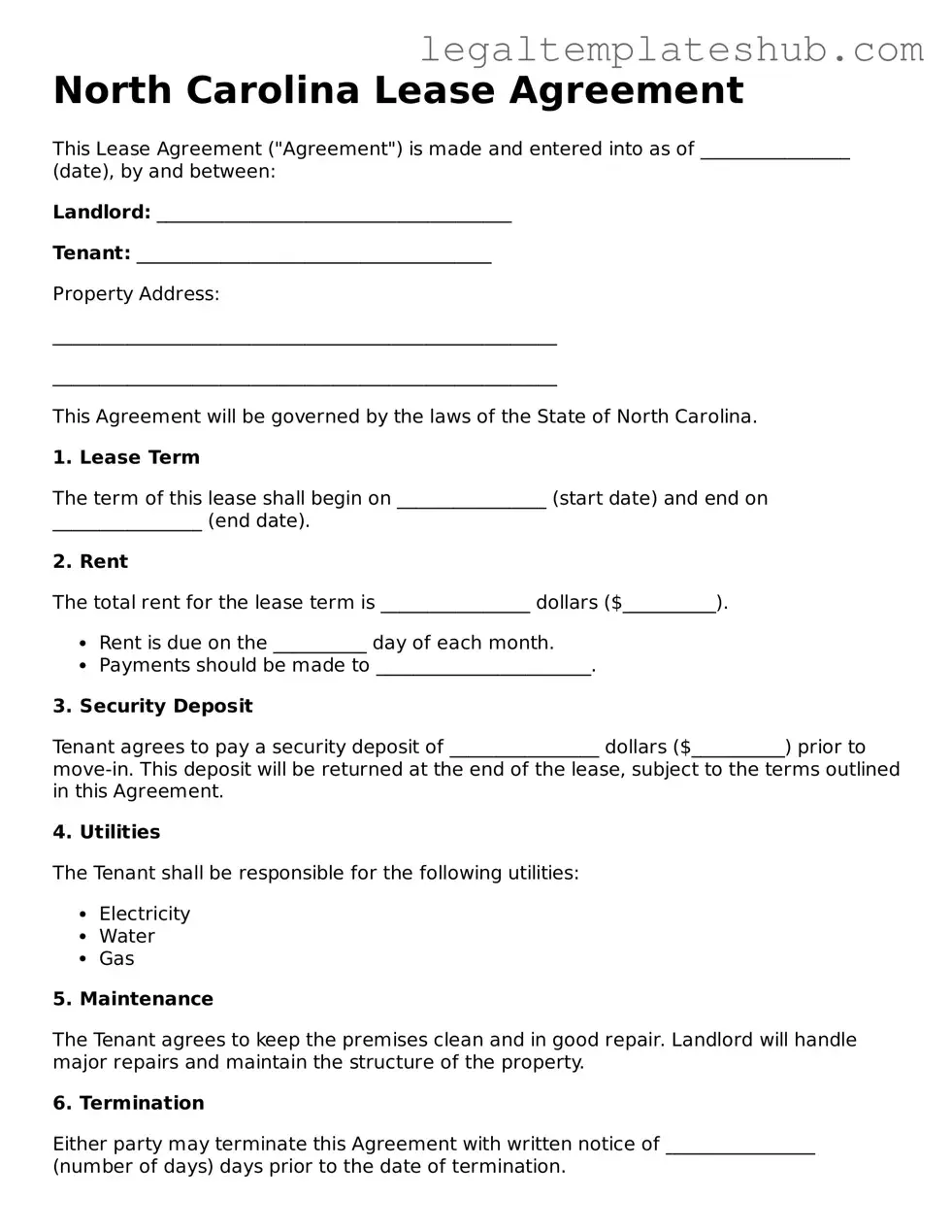Printable Lease Agreement Document for North Carolina
The North Carolina Lease Agreement form is a legal document that outlines the terms and conditions between a landlord and tenant for renting residential or commercial property. This form serves as a binding contract, ensuring both parties understand their rights and responsibilities. To get started, fill out the form by clicking the button below.
Access Editor
